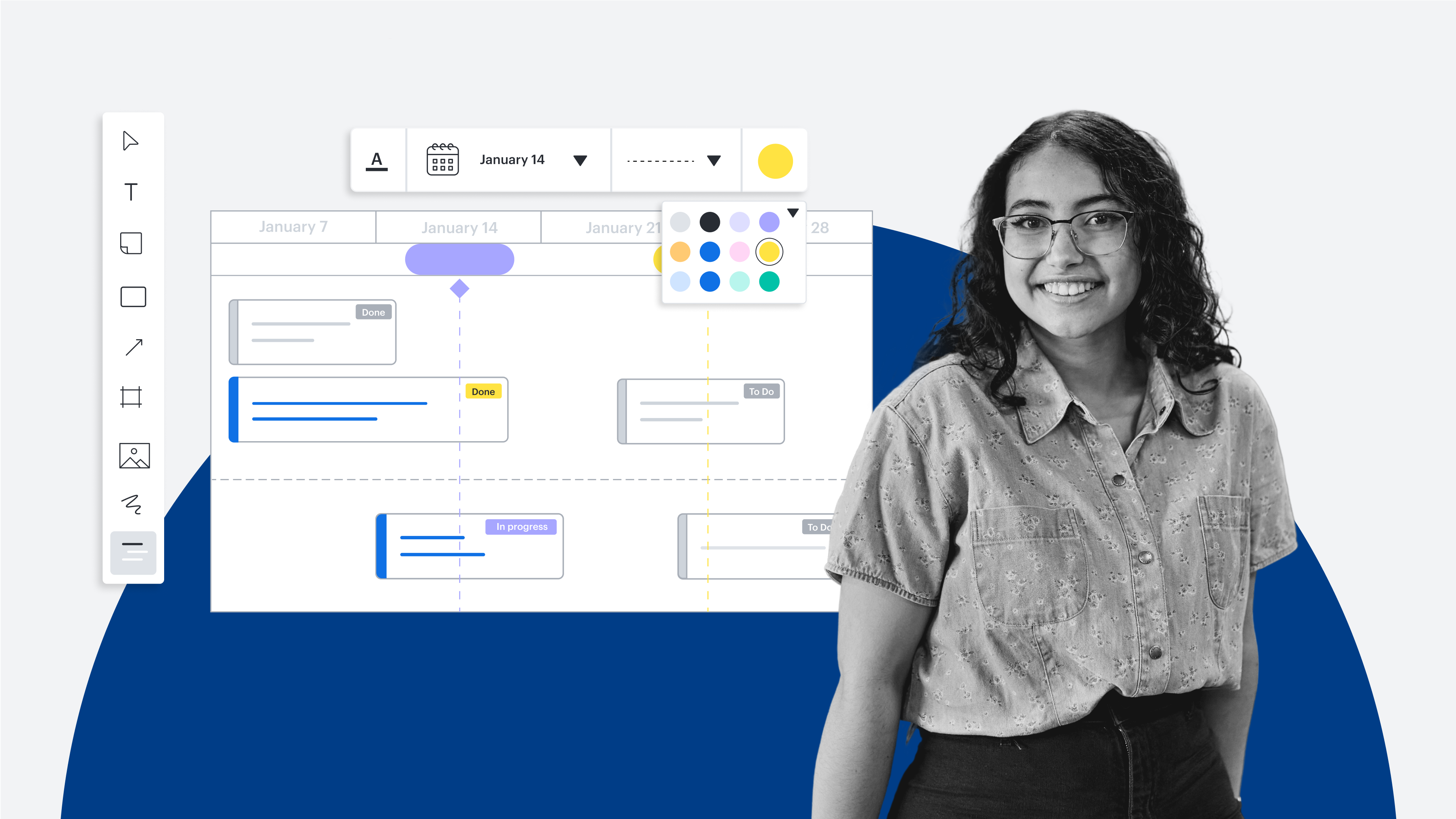
How 5 public sector orgs are accelerating modernization and boosting efficiency with Lucid
Reading time: about 9 min
Efficiency and modernization, long-standing goals in the public sector, are more urgent than ever this year. Since January 2025, a series of executive orders has been issued with significant implications for the modernization and security of U.S. government software and IT legacy systems.
Meeting these goals requires a shift in how government agencies and contractors work—and new solutions to support this shift. Many public sector organizations have already made significant progress toward modernization with Lucid, the only complete, FedRAMP Authorized solution for visual collaboration and work acceleration.
With Lucid, public sector organizations are working 6x faster, spending 93% less time on creating diagrams and visuals, and cutting costs by up to $100,000. Take a look at how these five organizations are using Lucid to modernize their tech stacks, accelerate transformation, and realize major efficiency gains.
Defense contractor cuts costs, improves knowledge retention, and increases workshop engagement
For the Agile and IT teams at this defense contractor, Lucid has become the cornerstone to alignment and efficiency.
The Agile team first turned to Lucid to reduce bottlenecks in their processes caused by duplicate efforts and scattered touchpoints. With a 60-day goal for improvement, the Agile team designed and implemented a series of sequential exercises in Lucid to streamline and document their discovery process. Having a clearly documented discovery framework provided consistency across facilitators and helped them carry data and findings between steps, reducing duplicate work.
The facilitators have also been able to make their workshops far more collaborative using Lucid. With icebreaker activities and real-time collaboration capabilities, both distributed and in-person teams alike are able to contribute to shared boards, establish trust, and work together toward impactful solutions.

Although the contractor explored alternatives like Microsoft Whiteboard, Teams, and Visio, they found these tools to be lacking the interactivity, connectedness, and version control they needed. One project lead said trying to facilitate workshops without Lucid would “be like forcing us to cut an acre of grass with scissors.”
Lucid also saved the day when the IT service delivery team’s strategic planning offsite, meant to align objectives with enterprise goals and streamline IT operations for the entire company, was derailed by snowstorms. With teams spread across multiple U.S. time zones, rescheduling would have delayed vital planning, jeopardizing their overarching goal of delivering cost-efficient, seamless IT services to global employees.
Instead, the team moved their planning process entirely to Lucid, maintaining full participation while reducing travel costs. They continued using the same Lucid documents following the virtual meeting to iterate on plans and easily recap relevant information to specific teams, completely eliminating the need to re-synthesize information into other formats such as PowerPoint decks.
The impact:
-
Time spent in workshops was reduced from 24 hours to 15 hours.
-
Engagement in workshops increased 315%, leading to more satisfied team members and stronger solutions.
-
Knowledge retention increased 30% with teams able to capture ideas, quickly ramp up team members not familiar with Agile processes, and document efficiency opportunities for easy recall.
-
Transitioning to virtual planning saved the organization $38,600 on travel and onsite costs (for one onsite event alone).
State agency automates record retrieval and expedites the planning process
This state agency takes advantage of Lucid’s intelligent features and integrations to save time during planning, prototyping, and recordkeeping.
The analysts who manage the agency’s tech applications are using Lucid to streamline their quarterly PI planning sessions. By integrating Lucid with Jira, this team can automatically visualize their plan on Lucid’s infinite canvas, where it’s easier to see and address gaps in capacity. When they’ve outlined the best path forward in Lucid, they can use the bidirectional sync with Jira to keep their plan updated in both places, eliminating the need to manually transfer information between tools.
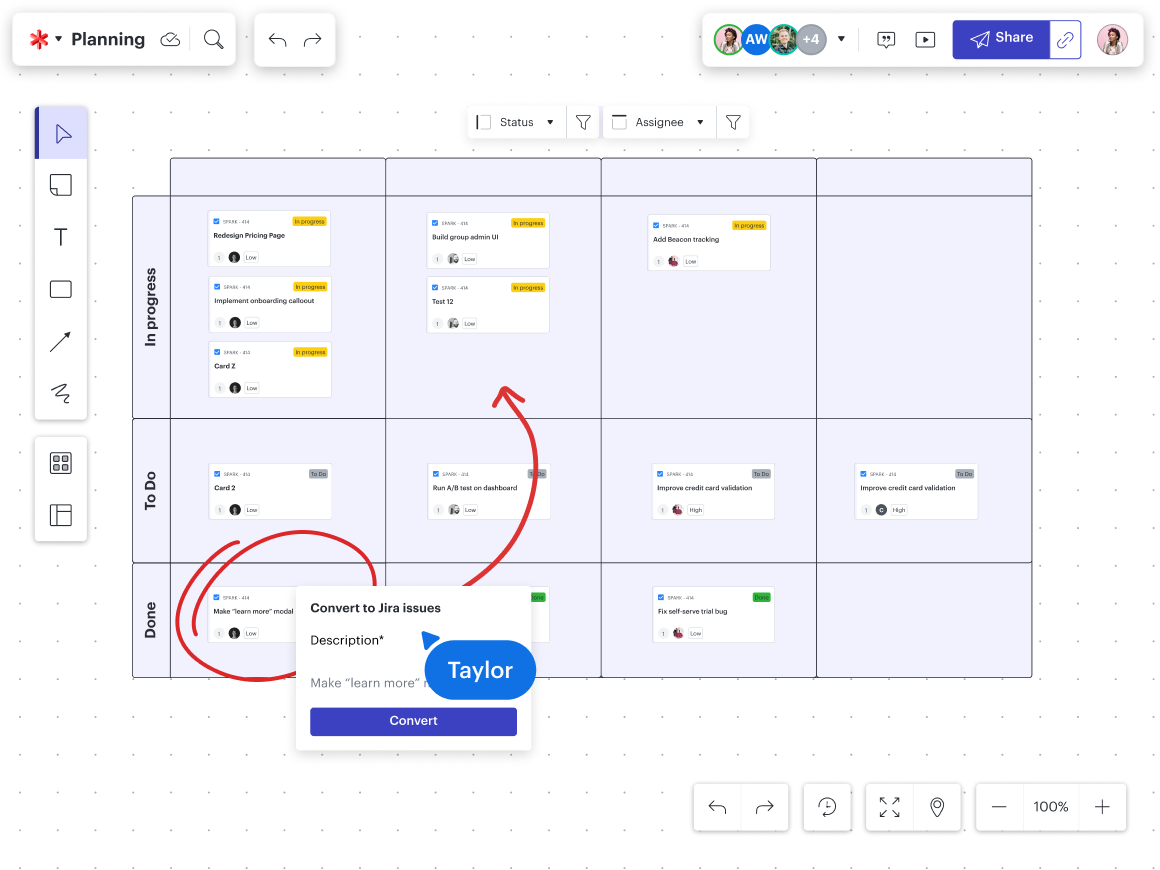
Lucid is also helping the agency's software development team accelerate the prototyping process for new application features. Using layers and interactive features such as comments and freehand drawing, the team is able to iterate rapidly and receive stakeholder feedback before coding. Reaching alignment in Lucid early on drastically reduces the time spent implementing changes during development.
The team at the agency responsible for managing water resources is also automating key parts of its workflow in Lucid. Through custom API and JQL queries, they instantly generate org charts that show the ownership status of state water resources. Then, they layer on conditional formatting to highlight ownership status at a glance. These visuals in Lucid stay updated automatically, eliminating recordkeeping delays that previously took 10 to 15 business days to process.
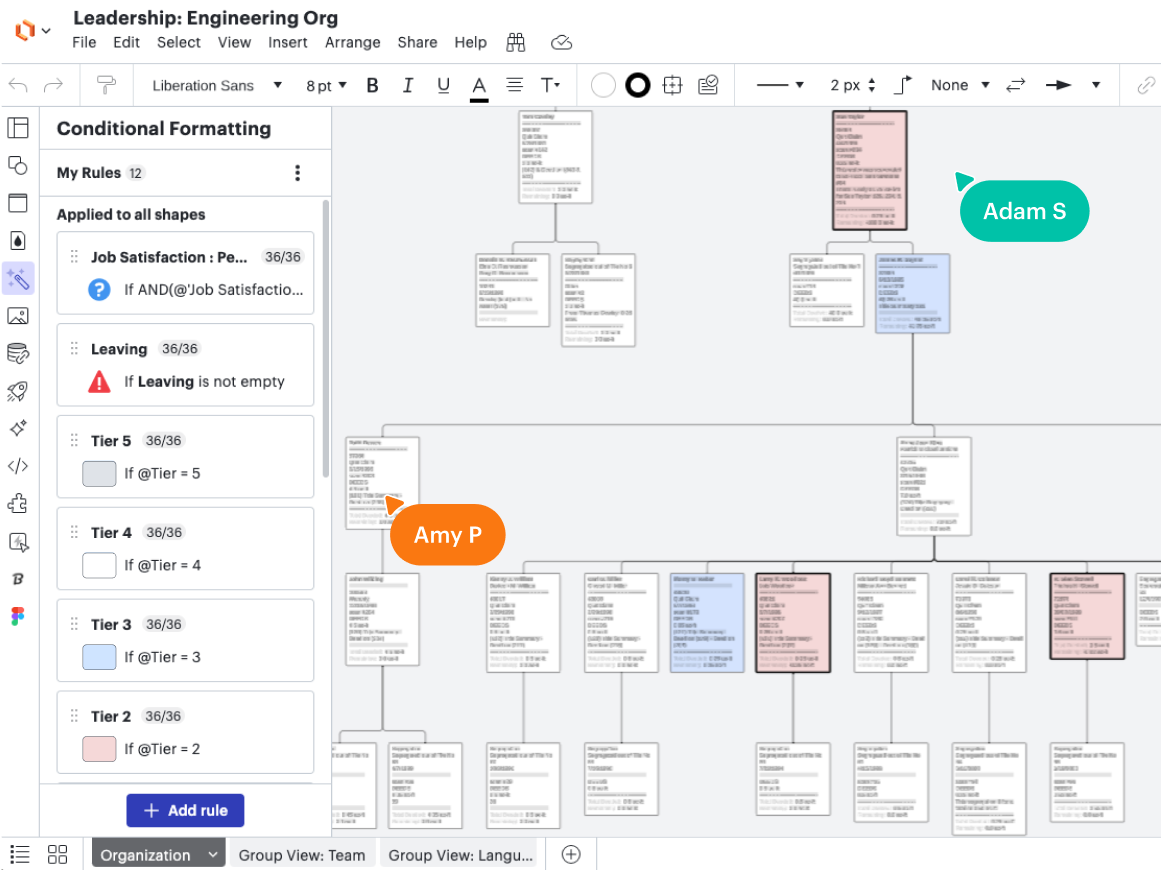
The impact:
-
Lucid’s integration with Jira reduces the number of quarterly planning meetings needed and eliminates 100% of ongoing work tracking.
-
The agency eliminated recordkeeping delays that previously took 10-15 business days to process.
-
The time savings during request processing is expected to be over 8 days per month.
Government contractor visualizes cloud environment and shortens delivery time for a federal agency
A leading government contractor uses Lucid to accelerate time to value for a federal agency while saving thousands of dollars.
To start, the contractor completely overhauled the agency’s PI planning process by switching from Mural to Lucid. With the support of Lucid’s professional services team, the contractor leveraged custom-built planning templates and Lucid’s Jira integration to streamline the transition to a more agile, efficient ecosystem.
As the contractor implements the roadmap, Lucid’s real-time data visualization and collaboration capabilities have proven invaluable. The governance and product management teams can import Excel data into Lucid on an interactive timeline to communicate work status to stakeholders, quickly identify bottlenecks, and adjust priorities.
It’s not just tasks and timelines that Lucid is helping the contractor visualize. Lucid also integrates with AWS to automatically generate cloud infrastructure diagrams. The architecture and security teams can use these dynamic visuals to optimize their environment while ensuring regulatory compliance and minimizing potential security risks.
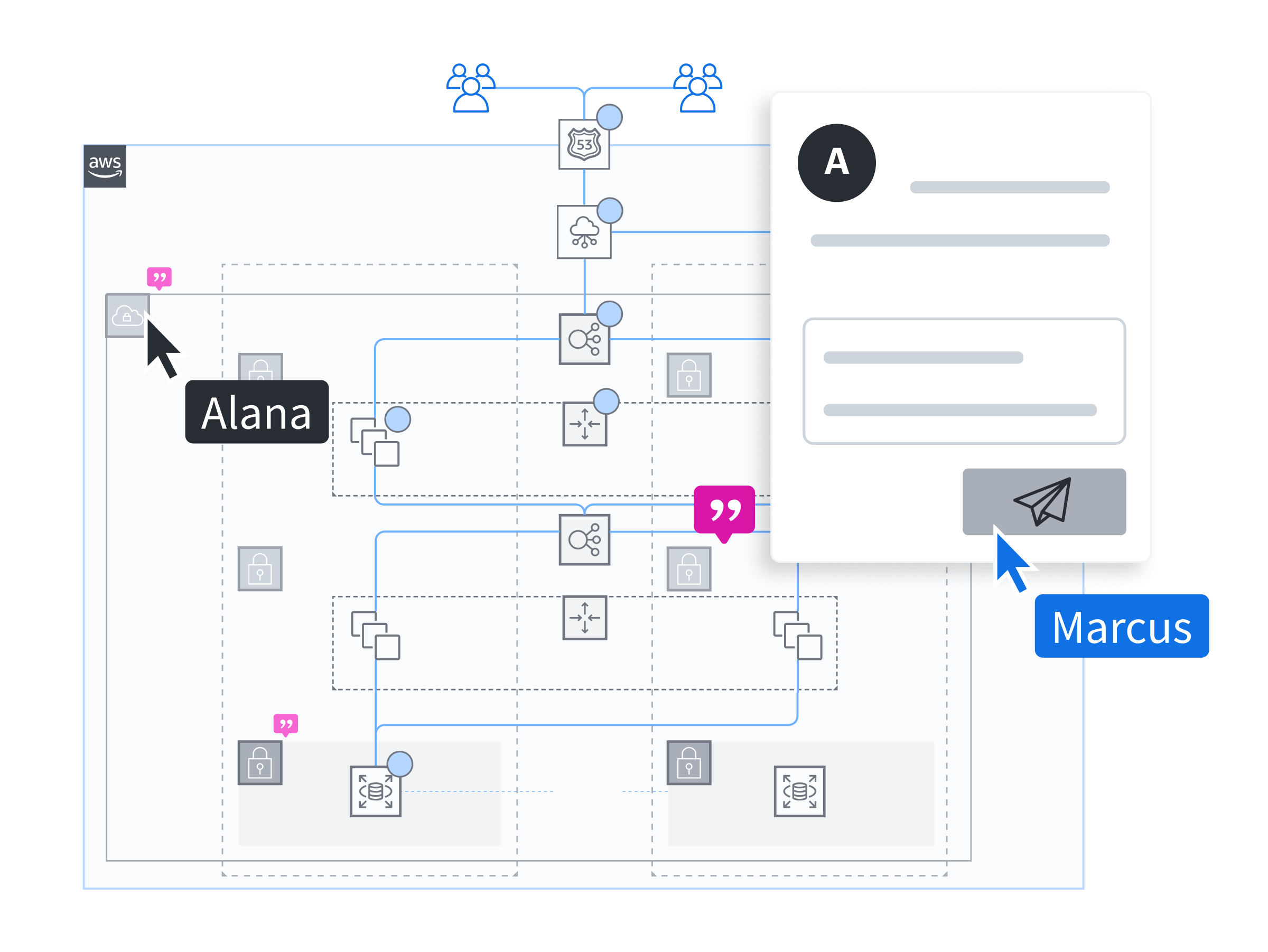
The impact:
PI output delivery time was reduced by over 25% through improved visualization and collaboration.
Reimagining the PI planning process and increasing operational efficiency saved the contractor more than 15 weeks per person annually and generated more than $100,000 in direct cost savings.
Time to implement new processes was reduced by 40%, leading to faster service delivery to clients.
A state department of transportation boosts efficiency and connects cross-functional teams
Another state agency used Lucid to foster efficient collaboration across its dispersed cross-functional teams.
Because the agency’s staff operates out of different locations, their work can easily become siloed without a centralized, virtual space for sharing materials and collaborating. Lucid has helped bridge the gap for this agency, connecting teams across divisions, including IT groups, project management teams, data management offices, and more.
Lucid acts as the central collaboration hub where all the agency’s important cross-functional work happens, from brainstorming and prioritizing ideas to documenting process flows and visualizing complex systems.
Some of Lucid’s most popular collaborative features for public sector agencies such as this one include:
-
Template and shape libraries to kick-start projects and create consistency
-
Facilitator Tools to keep remote teams engaged during real-time meetings
-
Team hubs to give teams a centralized place to access documentation, provide updates, and coordinate work
-
Visual Activities (interactive surveys for gathering stakeholder input) to simplify the feedback process and speed up alignment
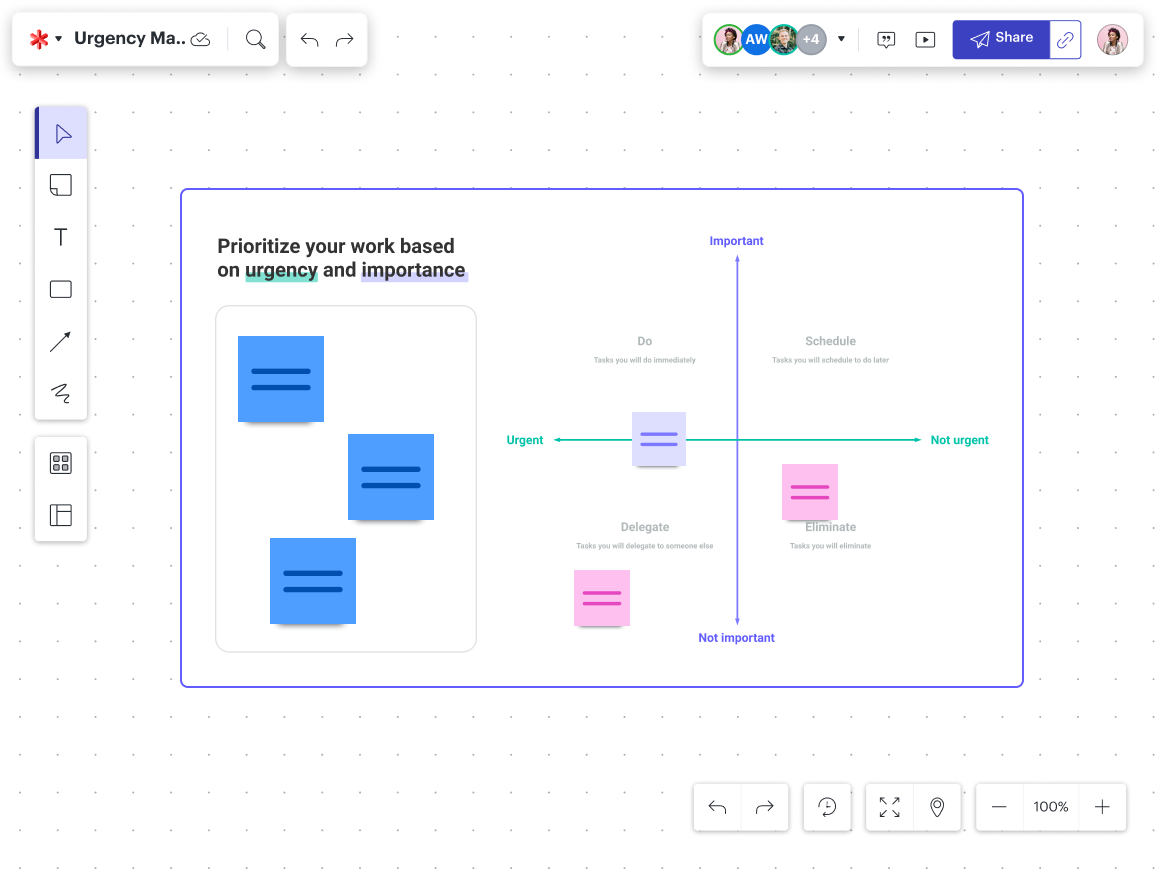
Now, teams can easily share cross-functional insights and see a holistic view of how their work impacts the broader department goals.
“Lucid has completely transformed team collaboration. As we’re much more virtual today, the Lucid Suite enables us to be more efficient now because we have all the materials we need in one place and can provide feedback, suggestions, and ideas in real time.”
—Business intelligence program manager at a state DOT
National public health agency saves time by accelerating diagramming and collaborating asynchronously
Lucid’s asynchronous collaboration capabilities have proven to be this agency’s most effective time-saving strategy.
The Agile development team, for instance, builds, shares, and iterates on process diagrams asynchronously during sprint cycles. They no longer have to wait for a meeting to get feedback or make adjustments, reducing the time spent in unnecessary meetings and empowering them to make informed decisions faster.
Before Lucid, response teams diagrammed key protocols using paper and pen. It was difficult to capture feedback on their diagrams, and making updates meant manually drawing out completely new diagrams. With Lucid, they can share their diagrams at any time, capture process feedback asynchronously, and make updates directly in Lucid (with version history to see changes)—all allowing them to improve processes much faster.
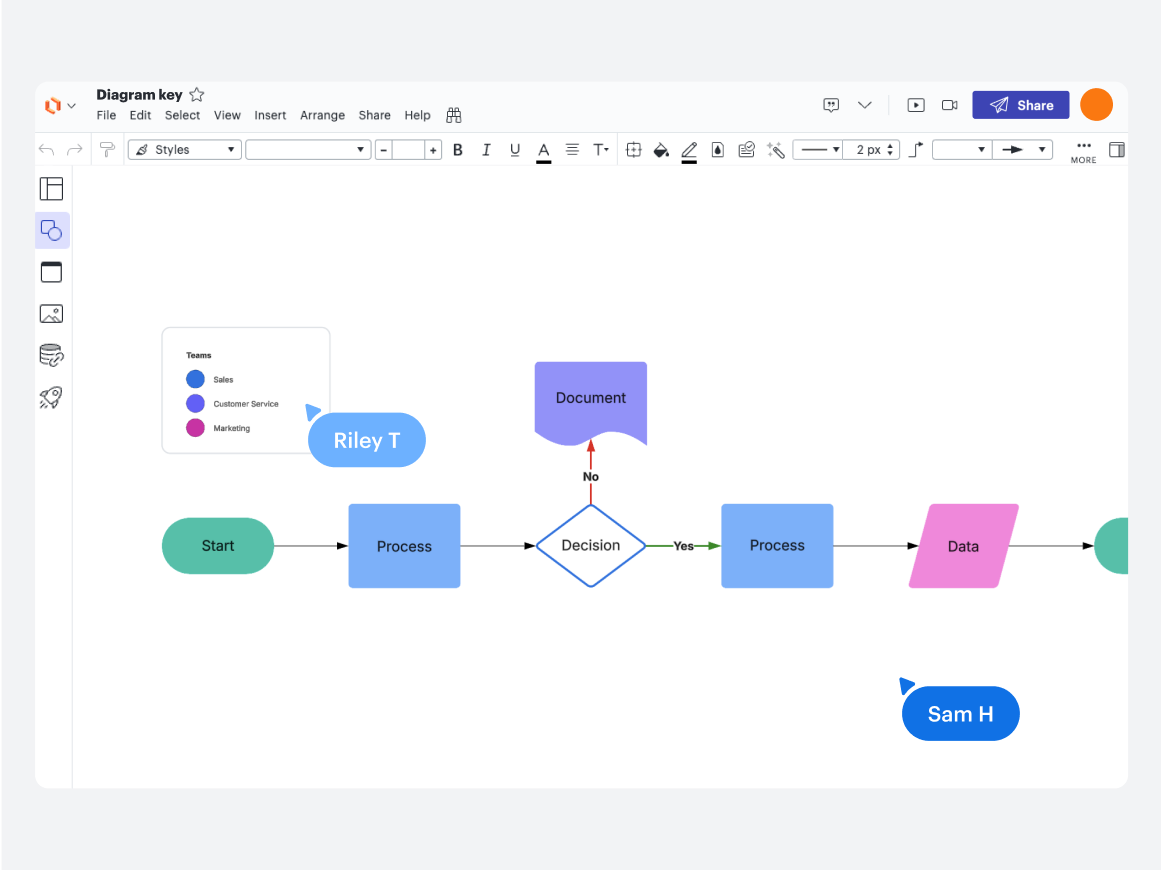
Other teams are also using Lucid as a single source of truth for their key documentation. Project management houses timelines in Lucid to launch and track programs. HR teams create org charts to visualize team layout, employee function, employment status, and reporting structure. Laboratorians and technicians diagram laboratory management systems to document the entire lifecycle of a test sample, bridging their knowledge gaps and creating references for other teams to get up to speed quickly.
The best part is that none of this documentation is static; each team can make updates directly in Lucid so they’re always working off the most current resources.
The impact:
-
By leveraging Lucid's asynchronous collaboration features, the Agile development team saves 24 hours every 2-week sprint cycle, resulting in three and a half weeks of time saved per year.
-
The project management team creates roadmaps and diagrams in 75% less time using Lucid compared to Visio.
-
Laboratory teams now diagram protocols in Lucid in only 15 minutes compared to the four hours it took before, cutting this time down by 93%.
-
Response teams are 6x faster in reviewing testing processes due to asynchronous collaboration.
See what Lucid can do for you
These are just five examples of how Lucid is powering efficient work for today’s public sector teams.
To recap, Lucid helps public organizations accelerate modernization by:
-
Replacing legacy systems and consolidating tools with a single platform for virtual whiteboarding and intelligent diagramming
-
Providing real-time and asynchronous collaboration capabilities for brainstorming ideas, building roadmaps, diagramming systems, visualizing org structure, creating documentation, and more
-
Offering three powerful accelerators to support cloud migration, process optimization, and Agile transformation
No matter what your mission is, get there faster with Lucid.

Request a demo
See how Lucid can help your organization modernize systems, cut costs, and increase efficiency.
Get in touchAbout Lucid
Lucid Software is the leader in visual collaboration and work acceleration, helping teams see and build the future by turning ideas into reality. Its products include the Lucid Visual Collaboration Suite (Lucidchart and Lucidspark) and airfocus. The Lucid Visual Collaboration Suite, combined with powerful accelerators for business agility, cloud, and process transformation, empowers organizations to streamline work, foster alignment, and drive business transformation at scale. airfocus, an AI-powered product management and roadmapping platform, extends these capabilities by helping teams prioritize work, define product strategy, and align execution with business goals. The most used work acceleration platform by the Fortune 500, Lucid's solutions are trusted by more than 100 million users across enterprises worldwide, including Google, GE, and NBC Universal. Lucid partners with leaders such as Google, Atlassian, and Microsoft, and has received numerous awards for its products, growth, and workplace culture.
Related articles
Public sector digital transformation: 4 strategies for increasing clarity, alignment, and adaptability
Learn how to create clarity, alignment, and adaptability to accelerate digital transformation ini the public sector.
4 strategies to improve the customer experience for citizens
Public sector organizations are being asked to improve the citizen experience. Here are four strategies to get you started.
Improving operational efficiency in the public sector with Lucid
Efficiency requires modern collaboration. Learn how to streamline processes, align on decisions, and save hours on documentation.
Guide to legacy system modernization for IT executives
Legacy systems are limiting your productivity. In this article, we explore frameworks to modernize legacy IT systems.
